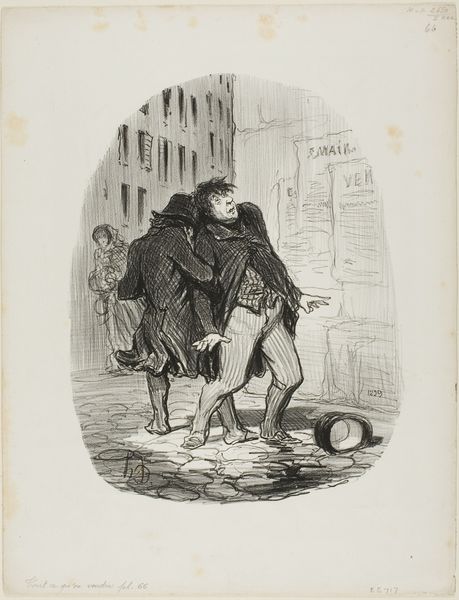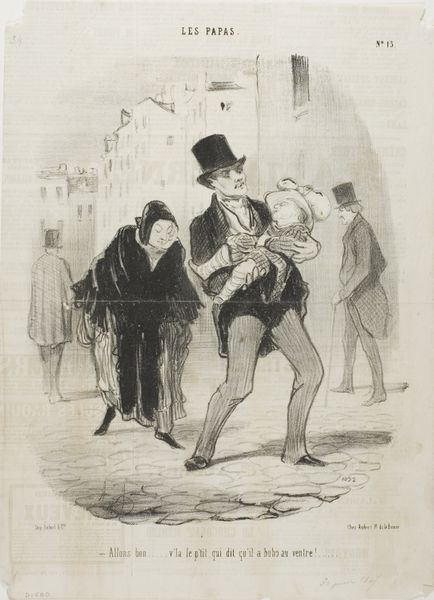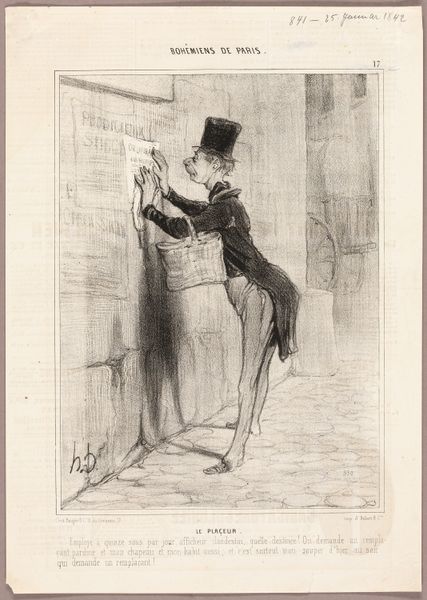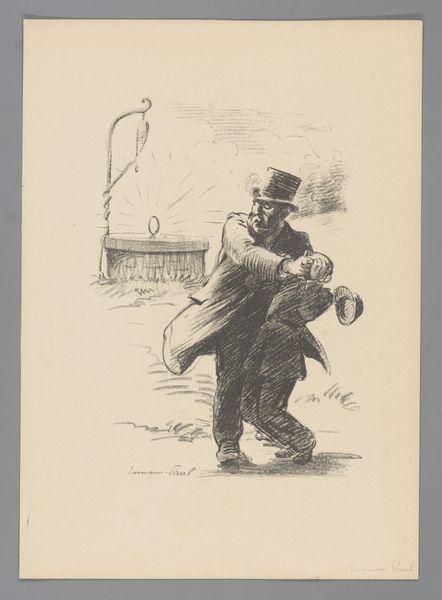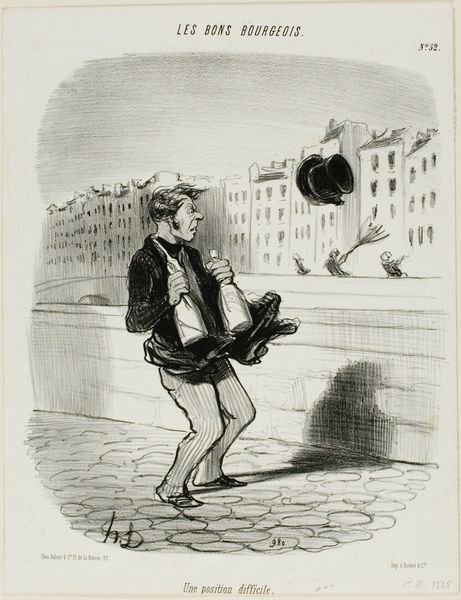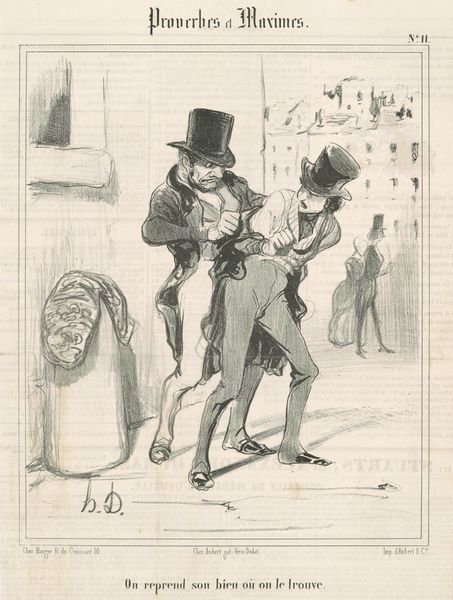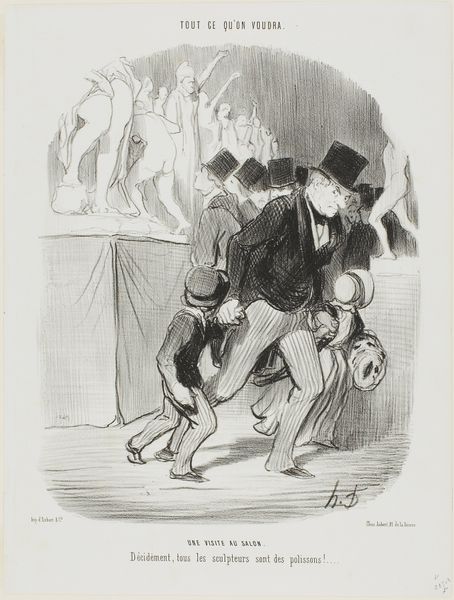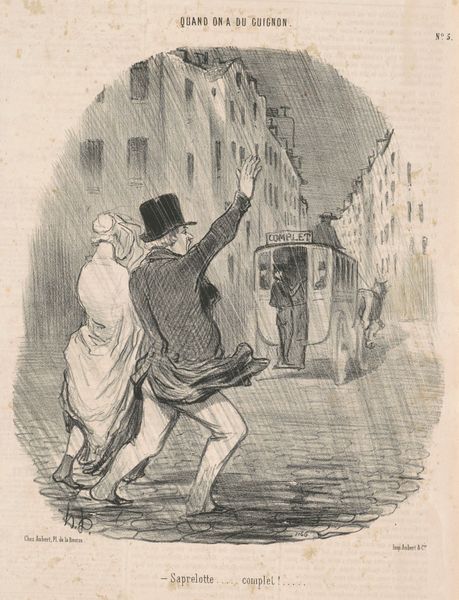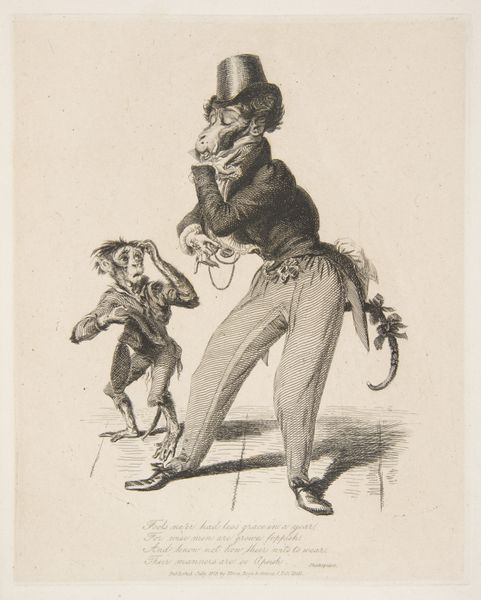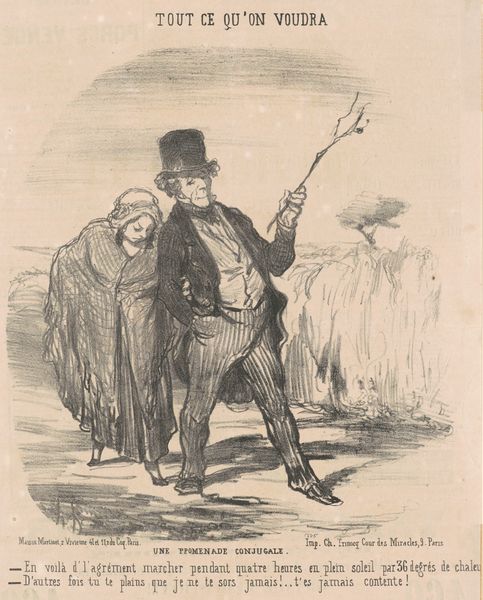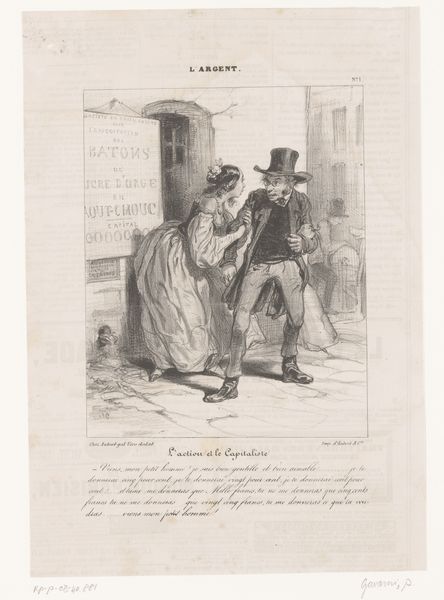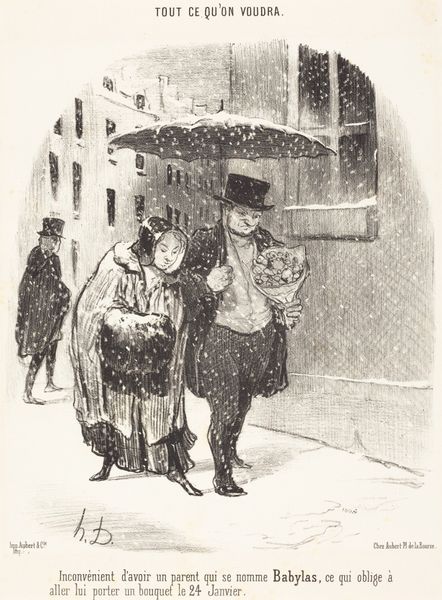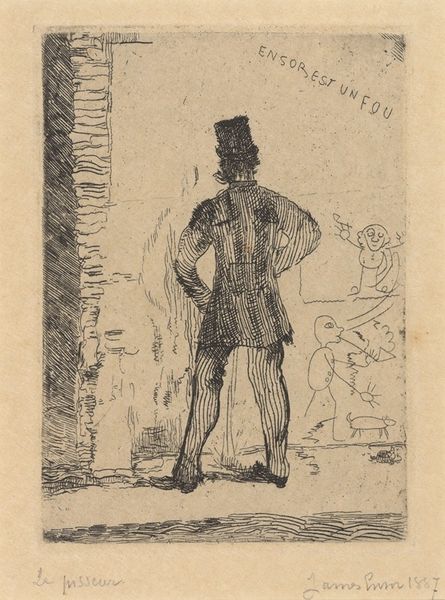
Robbed! Empty-Pocket Street..., plate 13 from Émotions Parisiens 1839
0:00
0:00
Dimensions: 246 × 194 mm (image); 340 × 250 mm (sheet)
Copyright: Public Domain
Curator: Honoré Daumier's 1839 lithograph, "Robbed! Empty-Pocket Street..." hangs before us, a plate from his "Émotions Parisiens" series now held at The Art Institute of Chicago. What captures your eye first? Editor: It’s the central figure’s exaggerated posture. That lanky, almost marionette-like body contorted in surprise or frustration… he looks both comical and profoundly vulnerable. It speaks volumes about the precariousness of urban life, then and now. Curator: Precisely! Notice how Daumier uses caricature to amplify this sense of precarity. The long limbs, the gaping pockets… it all directs us to the idea of a person stripped bare, metaphorically and perhaps literally. Editor: I read that also through the lens of social commentary. Daumier often used his art to critique the bourgeoisie, right? This could be a jab at their supposed financial security, revealing how easily it can be snatched away, especially in an industrializing Paris full of disparities. Curator: Absolutely. The backdrop is filled with poster-covered walls which might suggest not only a rapidly transforming city but also how identity could be marketed and exploited in commercial spaces. And his hat is perhaps a sad memento to his previous state. It could also signify his aspiration to wealth. Editor: It's striking how Daumier evokes so much emotion with simple lines. The shading, the way he renders the cobblestones… it creates a sense of depth and immediacy. The group of figures fading into the distance seems almost indifferent to this man's misfortune. A harsh, yet probably truthful representation of Parisian indifference. Curator: The power of lithography allowed Daumier to disseminate these potent social commentaries widely, embedding symbols of urban life and struggle into the cultural consciousness. We may look to it as a historic object, but that figure represents anxieties and vulnerabilities that are always in play. Editor: The rawness of the print echoes that sense of stolen security. It invites us to reflect on who is made visible and invisible, who holds power and who is easily dispossessed, not only then but today. Curator: Indeed, the image is not simply of a historical incident; it's an archetype, a persistent question about social justice and economic vulnerability. Editor: An archetype rendered with unexpected beauty, which perhaps gives its message all the more staying power.
Comments
No comments
Be the first to comment and join the conversation on the ultimate creative platform.
